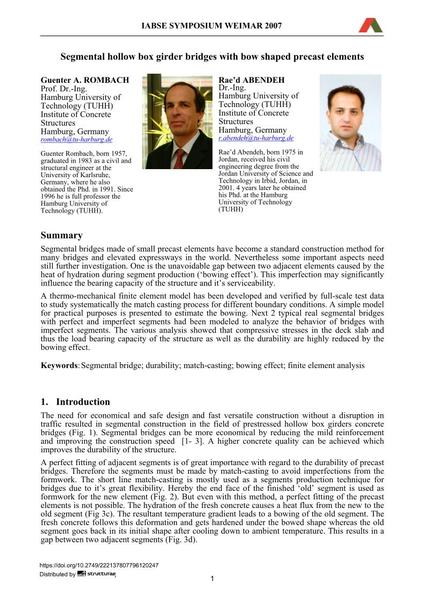Segmental hollow box girder bridges with bow shaped segments

|
|
|||||||||||
Bibliografische Angaben
| Autor(en): |
Günter Rombach
R. Abendeh |
||||
|---|---|---|---|---|---|
| Medium: | Tagungsbeitrag | ||||
| Sprache(n): | Englisch | ||||
| Tagung: | IABSE Symposium: Improving Infrastructure Worldwide, Weimar, Germany, 19-21 September 2007 | ||||
| Veröffentlicht in: | IABSE Symposium Weimar 2007 | ||||
|
|||||
| Seite(n): | 188-189 | ||||
| Anzahl der Seiten (im PDF): | 7 | ||||
| Jahr: | 2007 | ||||
| DOI: | 10.2749/222137807796120247 | ||||
| Abstrakt: |
Segmental bridges made of small precast elements have become a standard construction method for many bridges and elevated expressways in the world. Nevertheless some important aspects need still further investigation. One is the unavoidable gap between two adjacent elements caused by the heat of hydration during segment production (‘bowing effect'). This imperfection may significantly influence the bearing capacity of the structure and it's serviceability. A thermo-mechanical finite element model has been developed and verified by full-scale test data to study systematically the match casting process for different boundary conditions. A simple model for practical purposes is presented to estimate the bowing. Next 2 typical real segmental bridges with perfect and imperfect segments had been modeled to analyze the behavior of bridges with imperfect segments. The various analysis showed that compressive stresses in the deck slab and thus the load bearing capacity of the structure as well as the durability are highly reduced by the bowing effect. |
||||
| Stichwörter: |
Finite-Elemente-Analyse Dauerhaftigkeit Segmentbrücke
|
||||
